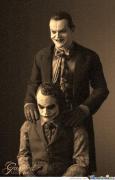I've been stewing lately on the definitions of marksmanship and practical shooting. I've landed on some definitions and am interested in what the best way to teach to new shooters.
I define practical shooting as the techniques of marksmanship and gun handling that account for adrenaline and exertion. Often, practical shooting diverges from what I would call "cold marksmanship," or what works best when everything is calm and relaxed.
Most mainstream shooting instruction seems to start with "cold marksmanship" and then make adjustments as required when it doesn't hold up under stress. Does practical shooting require a foundation of cold marksmanship?
Here's one example I've noticed in the small, local match I run. Lots of shooters group really well in the chest of an IDPA target, but will shank a headshot. My diagnosis is that they loosen up their grip in an attempt to be more precise, get the perfect sight picture, and then their brain says "GO NOW" and they shank the trigger. When I coach people, I will tell them to confirm grip on a tight shot and get an acceptable, not perfect, sight picture.
I'd be grateful for anyone's thoughts on my delineation between cold marksmanship and practical shooting and on which one should form the foundation.
Thanks,
Jon



 Reply With Quote
Reply With Quote



